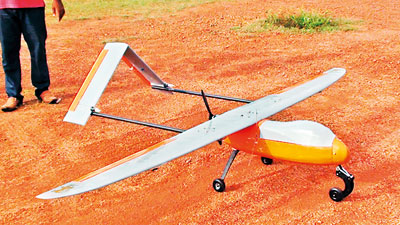Ten professional jobs threatened by advances in big data and machine learning
View(s):1. Healthcare
Some aspects of a doctor’s job can now be done by computers. For example, surgeons already use automated robotic systems to aid with less invasive procedures. IBM’s Watson proved it can diagnose lung cancer from analysing MRI scans much more reliably than real people. In addition, the UCSF Medical Center recently launched an automated, robotics-controlled pharmacy at two UCSF hospitals that automatically dispense prescriptions based on barcodes scanned by nurses. In fact, Johnson & Johnson has an FDA-approved device that can deliver low levels of anesthesia automatically— no anesthesiologist required.
2. Insurance
Much of what insurance brokers and insurance underwriters do today can be done by computers using big data and machine learning. Formulas have been used for decades to determine how much insurance a person is qualified for and at what rate, but new tools will automate the decision-making process even more.
3. Architects
Programmes already exist to help individuals design their own homes, making architectural skill and even design and color choices more automated. For now, most people are using the software mostly as a visualisation tool, or to replace architects for very small projects. But as the sophistication of the programmes improves, so will the need for human architects and designers diminish.

File pix of drone developed by Moratuwa University
4. Journalists
Much of what journalists do can now be automated using machine learning tools such as narrative science that creates natural language news stories from analyzing data. In fact, if you’ve read a financial earnings report in the past year or two, you’ve probably read an article or press release generated by a machine. The first places these programs will be used are in financial and sports reporting, which rely heavily on data and numbers, but other fields are not far behind. Services are already appearing that “scrape” content from news sites and “rewrite” it to avoid outright plagiarism but include the same content for
websites.
5. Financial industry
Algorithms can now analyze financial data and prepare accounts (as well as do tax returns) — without the need for accountants. Bank tellers have already been partially replaced by ATMs, but soon even higher level bankers, including loan officers, could be easily replaced by automated systems. Even governments are now using big data and machine learning to check tax returns and identify potential fraud in tax matters. We know that computers are already being used to make stock trades faster than humans ever could and they’re even used to predict how the market will react and make recommendations whether you should buy or sell.

Teachers
6. Teachers
The job of teachers will definitely change with the digitisation. Studies have already shown that algorithms used to customize leaning to individual pupils based on their progress and understanding can be more effective than a human teacher. While this may be a boon to school districts desperate to find qualified individuals to teach, it may also eventually reduce the role of classroom teacher to that of proctor or babysitter — or eliminate it altogether.
7. Human Resources
Human resources, headhunting and hiring is already being affected by data mining as algorithms take on the job of sorting through resumes to find the perfect candidates. Other jobs of human resources, including collecting and filing paperwork, advising employees about benefits, etc., can easily be automated.
8. Marketing and Advertising
Marketing is all about that most human of skills, persuasion and manipulation. But even that is being successfully outsourced to computers. Persado, a natural language software firm, has put its computers to the task of writing compelling email subject lines for large retail organisations that can as much as double open rates. Companies are also experimenting with automated ad buying: instead of having people choose which magazines to place ads in and on which pages, the computers take care of it, using billions of data points for reference.
9. Lawyers and Paralegals
In the discovery phase of a lawsuit, lawyers and paralegals can be required to sift through thousands, even tens of thousands of documents depending on the case. Now, sophisticated databases can use big data techniques including syntactic analysis and keyword recognition to accomplish the same tasks in much less time. In fact, it’s likely that a Watson-style machine learning system could be legally “trained” to review precedent and case history and even draft legal briefs — which has traditionally been the job of lower level law firm associates. But don’t think it’s only the lowly junior associates whose jobs are at risk:
lawyers are well paid now to predict the outcome of major cases, but a statistical model created by researchers at Michigan State University and South Texas College of Law was able to predict the outcome of almost 71 per cent of U.S. Supreme Court cases. That ability to predict outcomes is possibly the most valuable (and lucrative) service lawyers provide, and it was easily matched by a computer.
10. Law Enforcement
Predictive policing is a hot-button topic. Many critics say that predictive policing is an infringement of civil liberties, but it’s not all as “Minority Report” as many people believe. In 2003, the same sorts of algorithms retailers like Wal-Mart use to predict demand for products was used to predict demand for police presence in New York City on New Year’s Eve, and the results were striking: 47 per cent fewer random gunfire incidents, and a $15,000 savings in personnel costs during the 8-hour period. Better risk prediction could decrease the number of officers needed at any given time and for any given department.
Reality
Computers threaten more than low-skill jobs like factory workers, retail clerks, and waiters. As computers become exponentially more sophisticated, it naturally follows that they will be able to perform more sophisticated work. This will be a boon in many industries with increased accuracy and productivity. Any doctor would tell you that more accurate diagnostics are a good thing, and any lawyer would agree that faster, more comprehensive discovery is a benefit to the legal process.
The problem, however, lies in the fact that these technological revolutions might not create as many jobs as they eliminate. Certainly we will need more programmers, statisticians, engineers, data analysts and IT personnel to create and manage these sophisticated computers but it might be difficult to tell a factory line worker or taxi driver to shift gears and become a data analyst. How we fill the gaps when jobs are replaced will be the deciding factor as to whether all this automation is good for humanity or not.
(Extracts from an article by Bernard Marr, best-selling author, keynote speaker and leading business and data expert)
| Jobs that won’t disappear in the future | |
| 1) Mental Health and Substance Abuse Social Worker (Chance of being automated: 0.3 per cent) If you’re working in a healthcare job that requires a lot of direct interaction with patients, there’s probably no need to be looking over your shoulder. 2) Occupational Therapist 3) Dentist 4) Physician and Surgeon 5) Oral and Maxillofacial Surgeon 6) Dietitian and Nutritionist 7) Elementary School Teacher 9) Medical Scientist 10) Computer Systems Analyst (Gleaned from WWW) |


